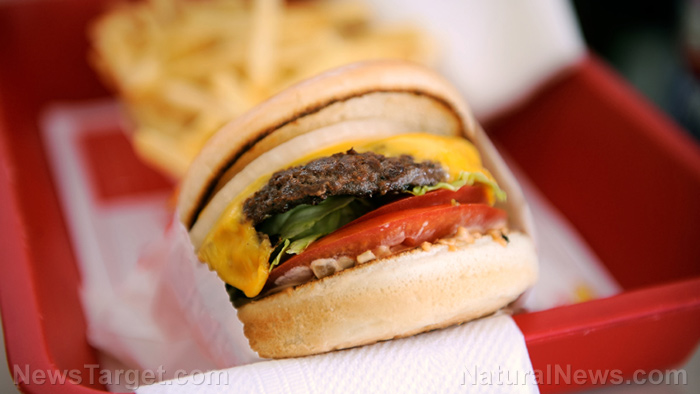Startup company opens first restaurant that uses a transparent robot to serve the “world’s freshest cheeseburger”
09/07/2018 / By RJ Jhonson

There could be a time when your cheeseburger will be made by robots. Creator’s transparent burger robot is an entire kitchen on its own and, if an article from TechCrunch is to be believed, can serve some of the freshest and most sumptuous cheeseburgers for its price point.
The machine is the newest and most advanced of its kind. Earlier attempts were either unsuccessful or simply too lacking for their hype. Some robots, for example, did no more than squirt liquid peanut butter and Nutella on bread to make its version of a sandwich. One robot literally flipped patties and did nothing much else.
In comparison, the Creator robot cuts, toasts, and butters buns, measures sauces and spices down to the milliliter and slathers them onto the bread, and slices tomatoes, onions, pickles, and cheese, which are then dropped onto the sliced bread.
The robot also grinds hormone-free, pasture-raised brisket and chuck steak on the spot. The patties are special, too – instead of the usual method where the ground meat is mashed together, the machine keeps the strands vertical before cutting and lightly pressing them into shape. The meat is cooked and placed on the burger and the entire thing slides out, ready to eat. It must be noted that the unique method of creating the beef patty apparently makes it melt-in-the-mouth soft without compromising the fullness of its flavor.
The machine does all this with the help of 350 sensors, 50 actuators, and 20 computers. A human concierge on a tablet takes the orders, though. At the moment, the burger offers four preset options, two of which are collaborations with established chefs.
But considering the technology used to make the burger, how much does each one cost? Creator CEO and co-founder Alex Vardakostas says a burger, which would normally cost anywhere from $12 to $18, would be priced at only $6.
If you think that’s cheap, that’s because it is. Vardakostas attributes the very low price of their products to the savings they get from having their whole kitchen – cooks included – replaced by a single machine.
“We spend more on our ingredients than any other burger restaurant,” he claimed.
In a market as competitive as the food industry and with undisputed leaders like McDonald’s, Vardakostas says the size of their kitchen and the costs of operating it could be among their best advantages.
“The average restaurant is 50 percent bigger in terms of square footage,” he says. Then, pointing to his company’s creation, he adds, “That’s our kitchen. You roll it in and plug it in.”
When machines take over human jobs
Creator’s food robot is one of the newest but most likely not the last machine designed to perform jobs traditionally done by human workers. In the past few months, for example, Amazon made headlines for its various forays into robotics, particularly its robot-run supermarket and warehouse robot workers. There were even plans for creating drones that would deliver packages directly to the customer.
Automation is a touchy topic in any sector. On one hand, it is seen as an effective means to lower production and manufacturing costs while improving cycle times and output quality and consistency. On the other hand, it is considered a threat to job security. An article from the BBC estimates that 800 million workers will lose their jobs to robots by 2030.
But the people behind the Creator robot say their machine is not out to get people unemployed. Instead, the robot does the dirty and dangerous work so human employees can do something more meaningful with their time.
“We’re playing around with education programs for the staff,” says COO and co-founder Steve Frehn. “Five percent of the time they’re paid just to read. We’re already doing that. There’s a book budget. We’re paying $16 an hour. As opportunities come up to fix the machine, there’s a path we’re going to offer people as repair or maintenance people to get paid even more.”
Discover how fast robots are advancing at Robotics.news.
Sources include:
Tagged Under: cheeseburger, fastfood, food industry, food production, food sector, food technology, human workers, robot workers, robotics, robots, robots and unemployment, robots taking over jobs




















